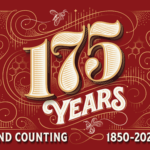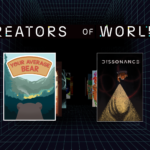“I visited the Natural History Museum of Utah a lot as a kid, and it ignited a huge interest in geology and paleontology in me. However, I didn’t fancy myself a ‘science person’ because I struggled with math and didn’t like chemistry and physics. My interest in science dropped off as a teenager. But when I took a geology class in community college, it opened my eyes up to what science is—a lens for looking at the natural world and trying to understand it.
While attending community college, I was looking to get more STEM experience, so I started volunteering at NHMU. Eventually, the collections manager asked if I wanted to do an internship. The catch was that you had to be a University of Utah student. I applied and luckily got in.
I started taking classes like World of Dinosaurs, taught by Mark Loewen [PhD’09]. When I got to know him better, he asked if I would be interested in researching horned dinosaurs with him and his team. I was really excited to get some research experience, so I took him up on the offer. That led to my being included as co-author on a paper identifying a new dinosaur, Lokiceratops rangiformis. That was really exciting, because it’s rare for an undergraduate student to contribute to something as meaningful as naming a new species. And it’s been awesome to get to share Lokiceratops with the world.
My goal is to work with kids and show them that science can be incredibly accessible. I want the younger generation to realize that not only can anybody be a scientist, but everybody is a scientist. We all want to know more about the world around us.”



Comments
Comments are moderated, so there may be a slight delay. Those that are off-topic or deemed inappropriate may not be posted. Your email address will not be published. Required fields are marked with an asterisk (*).